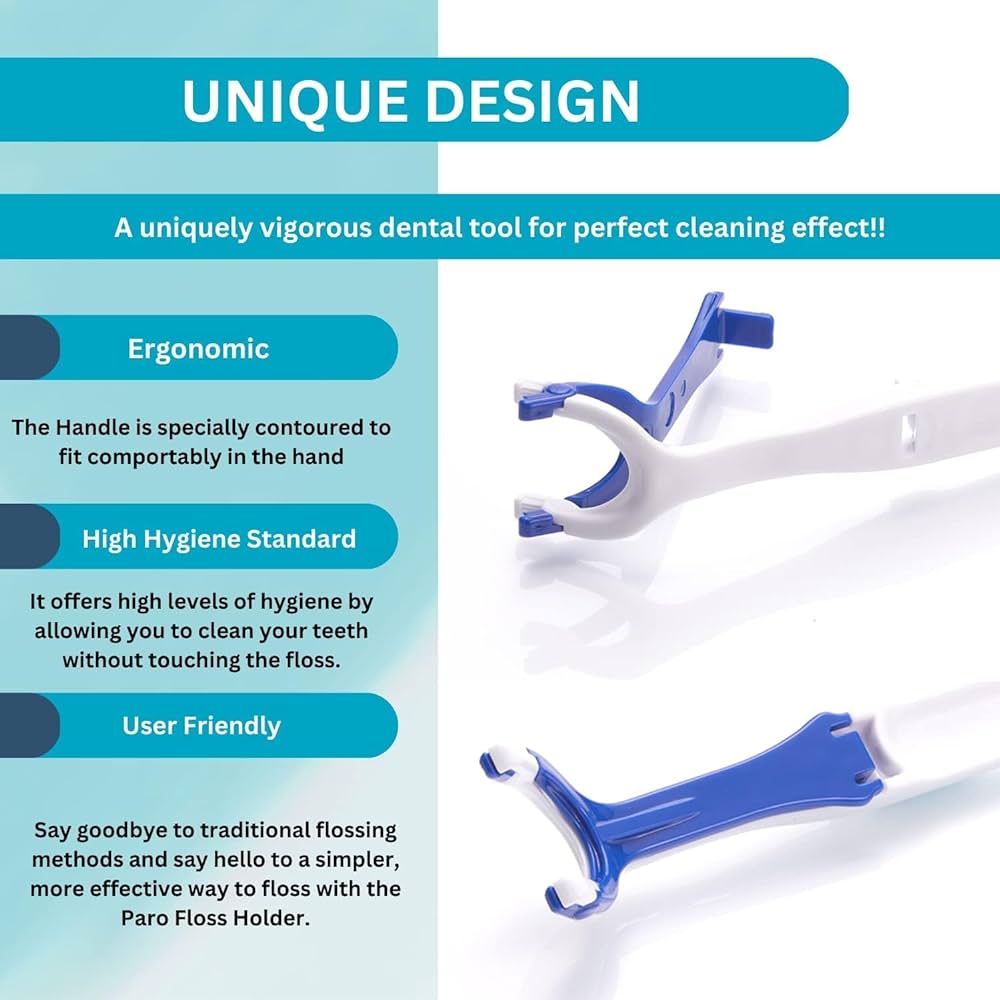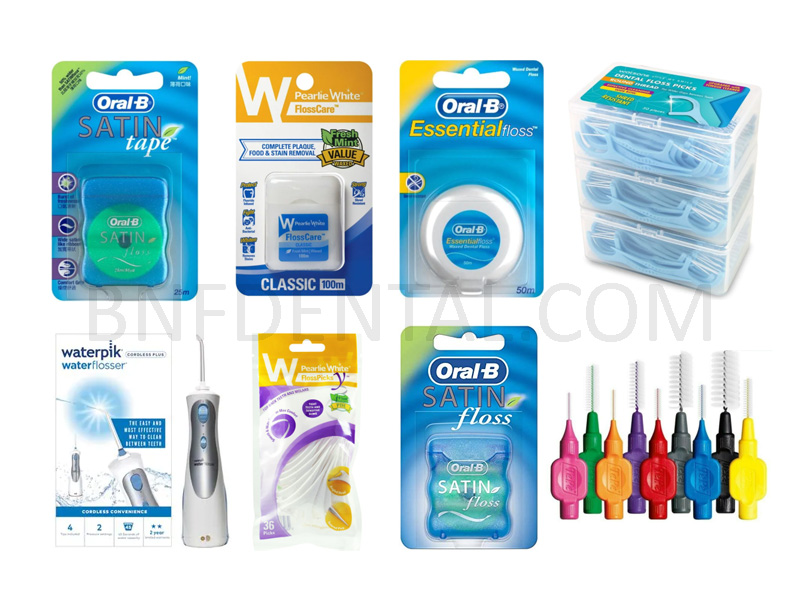How to Effectively Floss: Techniques and Tools
Picture this: your teeth are like a beautiful garden, and flossing is the essential tool that helps you maintain its pristine beauty.
But are you using that tool effectively? Are there techniques and tools you’re unaware of that can take your flossing game to the next level?

In this discussion, we will explore various techniques and tools that can help you effectively floss your way to a healthier smile.
So, buckle up and get ready to discover the secrets of effective flossing that will leave you wanting more.
Choosing the Right Floss
To ensure effective oral hygiene, it’s essential to choose the right floss for your dental care routine. With so many options available, it’s important to understand which type of floss will work best for you.
One of the first things to consider is the thickness of the floss. Thicker floss, such as tape or ribbon, may be more suitable for individuals with wider gaps between their teeth. On the other hand, if you have tight spaces between your teeth, a thinner floss, like waxed or flavored floss, may be easier to maneuver.
Another factor to consider is the material of the floss. Nylon floss is the most common and affordable option, but if you have sensitive gums, you may want to consider a softer material like PTFE floss. Additionally, if you have braces or dental work, you may benefit from using a specialized floss designed to navigate around brackets and wires.
Ultimately, the right floss is the one that you’ll use consistently and effectively. So, take the time to find the floss that suits your needs and make it a regular part of your oral care routine.
Proper Flossing Technique
Now let’s talk about the proper flossing technique.
It’s important to break down the steps to ensure you’re doing it correctly.
Additionally, we’ll address common mistakes people make while flossing, so you can avoid them and maintain optimal oral health.
Technique Breakdown
For effective flossing, ensure that you maintain a firm grip on the floss and gently guide it between your teeth. Start by wrapping the floss around your middle fingers, leaving about two inches of floss between them. Hold the floss tightly, using your thumbs and index fingers.
To reach between your teeth, curve the floss into a C-shape, and slide it up and down against the side of each tooth. Be careful not to snap the floss into your gums, as this can cause irritation and bleeding.
Move the floss to a clean section for each tooth and repeat the process. Remember to floss both sides of every tooth, including the back teeth.
Common Flossing Mistakes
Many people make common mistakes when it comes to proper flossing technique. To ensure you’re flossing effectively, avoid these errors:
– Using too little floss: Don’t skimp on the amount of floss you use. A generous 18-inch strand allows you to have a fresh section for each tooth.
– Skipping the back teeth: It’s easy to forget the molars, but they need attention too. Make sure to reach all the way to the back of your mouth.
– Snapping the floss: Flossing should be gentle, not forceful. Instead of snapping the floss against your gums, use a gentle back-and-forth motion to clean between your teeth.
Interdental Brushes and Picks
Now let’s talk about interdental brushes and picks. These tools are essential for brushing between your teeth, reaching those tight spaces where your toothbrush can’t go.
It’s important to choose the right tool for your needs, so you can effectively remove plaque and food particles from between your teeth.
Brushing Between Teeth
To effectively clean the spaces between your teeth, consider using interdental brushes and picks. These tools can help remove plaque and food particles that regular brushing and flossing may miss.
Here are three sub-lists of interdental brushes and picks to choose from:
Interdental brushes:
– Cone-shaped brushes: These brushes have a pointed tip that can easily fit between tight spaces.
– Tapered brushes: These brushes have bristles that gradually become thicker, allowing for effective cleaning in larger gaps.
– Straight brushes: These brushes have a straight design and are suitable for cleaning wider spaces.
Interdental picks:
– Rubber-tipped picks: These picks have a soft rubber tip that gently massages and cleans the gums.
– Pointed picks: These picks have a sharp end for removing stubborn debris.
– Triangular picks: These picks have a triangular shape that can effectively clean larger spaces.
Choosing the Right Tool
When selecting the appropriate tool for interdental cleaning, it’s essential to consider the specific needs of your teeth and gums.
Interdental brushes and picks are two popular options to remove plaque and food particles from the spaces between your teeth that regular brushing can’t reach.
Interdental brushes are small, cone-shaped brushes that come in various sizes to fit different gaps between teeth. They’re effective for people with larger spaces or gaps and can be used by gently inserting the brush and moving it back and forth.
Interdental picks, on the other hand, have a thin, pointed end that allows for easy access to tight spaces. They’re suitable for people with smaller gaps or tight contact points.
Whichever tool you choose, make sure it’s comfortable to hold and easy to maneuver in your mouth for effective interdental cleaning.
Water Flossers: Are They Effective?
Using a water flosser can be an effective alternative to traditional flossing methods. If you’re considering incorporating a water flosser into your oral hygiene routine, here are some key points to consider:
– Efficiency: Water flossers use a powerful stream of water to remove plaque and food particles from between your teeth and along the gumline. This can be particularly beneficial for individuals with braces, implants, or sensitive gums, as it provides a gentle yet thorough cleaning.
– Convenience: Water flossers are easy to use and require minimal manual dexterity. They provide a quick and efficient way to clean your teeth and gums, especially in hard-to-reach areas.
– Additional benefits: Water flossers have been found to help reduce gum bleeding, gingivitis, and gum inflammation. They can also be a useful tool for individuals with certain medical conditions, such as diabetes or dry mouth.
While water flossers can be an effective addition to your oral care routine, it’s important to note that they shouldn’t replace traditional flossing entirely. Combining both methods can provide the most comprehensive cleaning and help maintain optimal oral health.
As always, consult with your dentist or dental hygienist for personalized recommendations on the best oral hygiene practices for you.
Flossing With Braces or Dental Appliances
If you have braces or dental appliances, effectively flossing can be a crucial part of maintaining oral health. Flossing with braces or dental appliances may seem challenging, but with the right techniques and tools, it can be done effectively.
When flossing with braces, it’s important to use a floss threader. This tool allows you to thread the floss under the wire of your braces, making it easier to reach between your teeth. Start by pulling a piece of floss through the threader, then carefully guide the floss between your teeth and braces. Move the floss up and down to remove any food particles or plaque. Be gentle to avoid damaging the wires or brackets.
You may also consider using a water flosser, which can help remove debris and bacteria from hard-to-reach areas. Simply aim the water stream between your teeth and along the gumline, making sure to cover all surfaces.
Remember to brush your teeth and braces thoroughly before flossing to remove any loose debris. With proper technique and consistent flossing, you can maintain a healthy smile even with braces or dental appliances.
Flossing Alternatives for People With Limited Dexterity
Consider alternative flossing methods if you have limited dexterity. Don’t worry, there are several options available that can make flossing easier for you. Here are three alternatives you can try:
– Flossing Picks: These handy tools have a small handle with a short piece of floss attached to it. They’re designed to reach between your teeth, making it easier for you to clean those hard-to-reach areas. Flossing picks are especially useful if you struggle with holding regular floss or maneuvering it around your teeth.
– Water Flossers: Water flossers, also known as oral irrigators, use a stream of water to remove plaque and food particles from between your teeth. They’re effective and gentle on your gums, making them a great option for people with limited dexterity. Simply aim the water stream at the gaps between your teeth and let the device do the work for you.
– Interdental Brushes: Interdental brushes are small brushes with bristles that can fit between your teeth. They’re particularly helpful if you have larger gaps between your teeth or if you wear braces. Interdental brushes are easy to use and can be incredibly effective in removing plaque and debris from those tight spaces.
Frequently Asked Questions
How Often Should I Replace My Floss?
To effectively maintain good oral hygiene, it’s important to know how often you should replace your floss. Regularly replacing your floss is crucial to ensure its effectiveness and prevent the accumulation of bacteria.
On average, it’s recommended to replace your floss every three to four months. However, if you notice fraying or signs of wear and tear, it’s best to replace it sooner.
Can I Reuse the Interdental Brushes and Picks?
Yes, you can reuse interdental brushes and picks, but it isn’t recommended. Reusing them can lead to a buildup of bacteria and decrease their effectiveness.
It’s best to replace them regularly to ensure proper oral hygiene. By using fresh interdental brushes and picks each time, you can effectively clean the spaces between your teeth and gums, reducing the risk of gum disease and tooth decay.
Are There Any Specific Flossing Techniques for Children?
There are indeed specific flossing techniques for children. It’s important to teach them the proper way to floss from an early age.
Start by using a child-sized flosser or floss picks that are easier for them to handle. Show them how to gently guide the floss between their teeth and move it up and down.
Encourage them to floss at least once a day to maintain good oral hygiene habits.
Can I Use a Water Flosser if I Have Sensitive Gums?
If you have sensitive gums, using a water flosser can be a good option for you. It’s a gentle and effective way to clean between your teeth without causing irritation. The pulsating water helps to remove plaque and debris, while also massaging your gums.
Just make sure to adjust the water pressure to a comfortable level and use a flosser tip that’s designed for sensitive gums.
Always consult with your dentist for personalized advice.
Are There Any Flossing Alternatives for People With Dental Implants?
If you have dental implants, there are flossing alternatives available. It’s important to maintain good oral hygiene to prevent complications.
One option is using interdental brushes, which can clean between the implants and remove plaque.
Water flossers can also be used, as they provide a gentle stream of water to clean the areas around the implants.
Additionally, there are specialized floss threaders that can help you navigate around the implants.
Remember to consult with your dentist for personalized recommendations.
Conclusion
In conclusion, proper flossing techniques and tools are essential for maintaining good oral hygiene. Choosing the right floss, using the correct flossing technique, and incorporating interdental brushes or picks can effectively remove plaque and food particles from between teeth.
Water flossers can also be a useful alternative. For those with braces or dental appliances, specific flossing methods should be followed. Additionally, individuals with his explanation limited dexterity can explore flossing alternatives to ensure their dental health.
Remember, consistent flossing is key to a healthy smile.

Welcome to my website! My name is Christopher Boake, and I am a dedicated and passionate dental hygienist with years of experience in the field. I am thrilled to share my knowledge and expertise with you through this platform, where I aim to provide valuable information on everyday dental care tips, restorative dental innovations, cosmetic smile enhancements, and periodontal treatment and maintenance.

